“My confidence rests in my hands”
Interior architect, designer and furniture maker, the career of Åke Axelsson spans eight decades. With chair models and interiors by the hundreds, including the Riksdag Library, King Carl XVI Gustaf’s jubilee room in Stockholm Palace and Sven-Harry’s art museum, it is no exaggeration that Åke Axelsson has furnished the public space of Sweden. Read here the interview on things great and small…
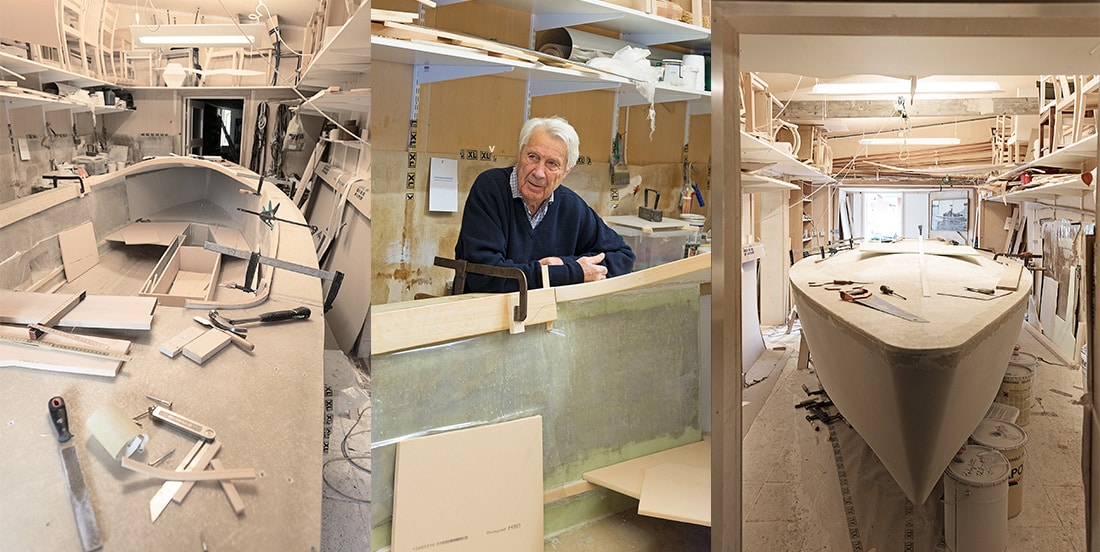
You built a boat this year, tell me about it…!
I built a boat for me and my significant other, Gerd. It’s a safe, stable and generous boat designed for Stockholm’s archipelago; it can go into coves and across shallow water. It’s made of plastic, so it’s easy to look after. For me, it’s essential to be able to generate our own electricity on board. With sails and a specially constructed electric motor, solar panels and windmills, I hope we can produce most of what we need. It’s an easy boat to sail. A perfect senior’s boat: broad with plenty of room for lots of friends. Boatbuilder Sven Hellström designed it and we built the boat together last winter.
You grew up in Skillingsmåla in Småland; was it easy for you to take up sailing?
I’ve never been much of a sailor, just an amateur who enjoys exploring the archipelago. When I was a child in Småland, there were flat-bottomed rowing boats in the lakes. But we didn’t have one. I became acquainted with the archipelago in the 1950s, when I started seeing Inga-Lill and her family who lived on the islands near Möja. That’s where I learned what I know today about boats, sailing and Stockholm’s archipelago.
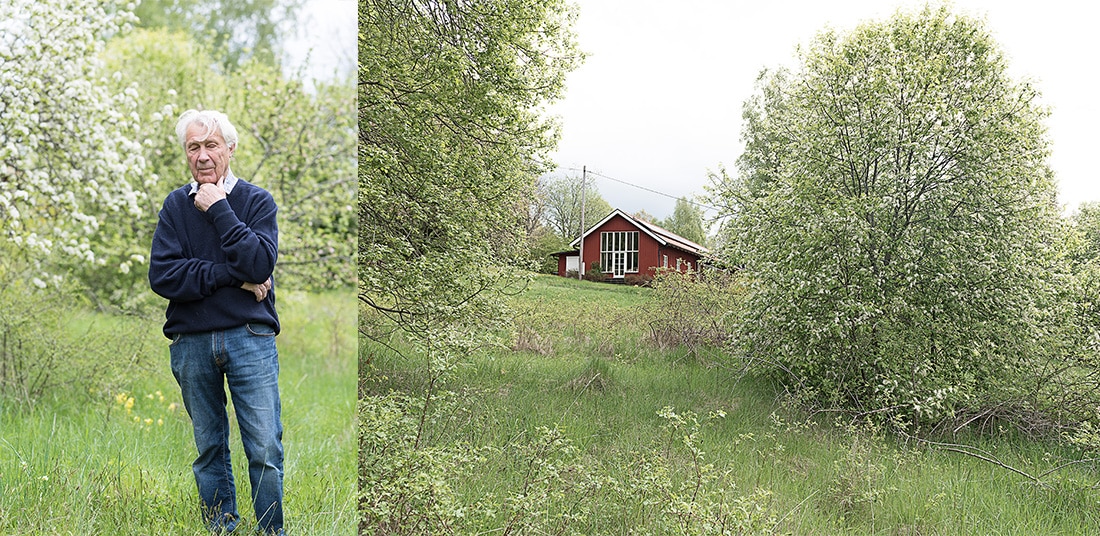
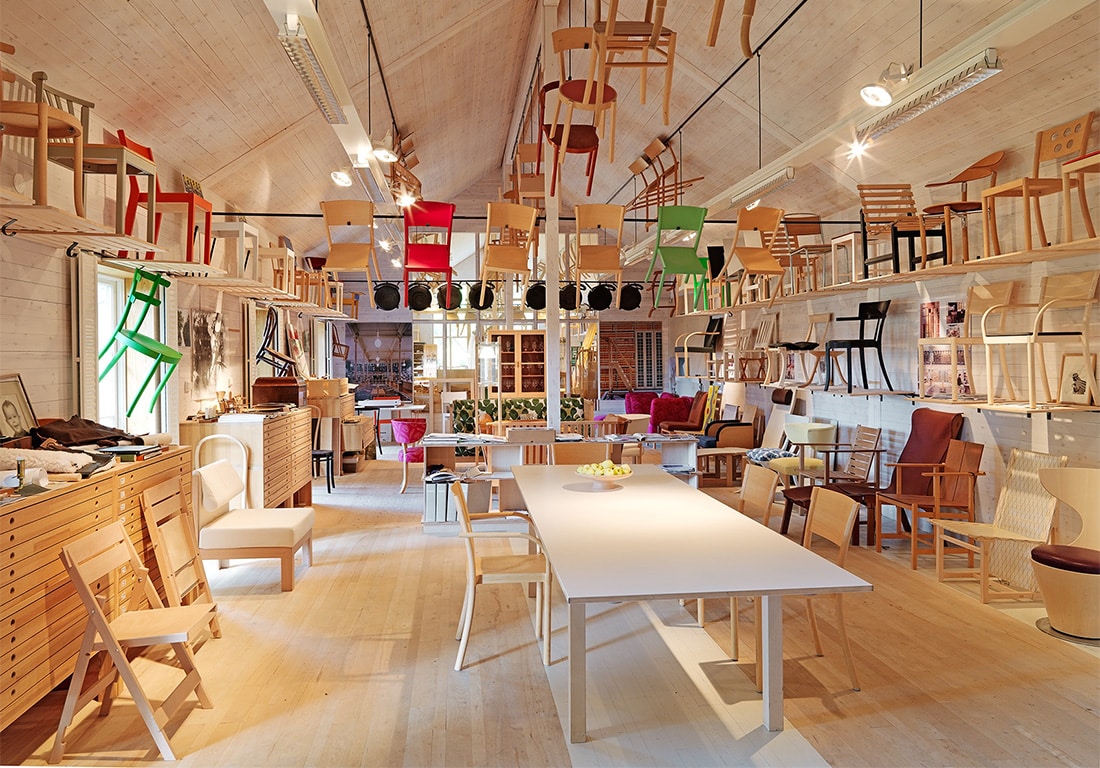
What’s it like living in Engarn?
Engarn village is on Resarö, two kilometres from Vaxholm; the old village is listed in court records from the early 14th century. The barn that provides the foundations for my house belonged to the farm that once existed there. Engarn is similar to the type of environment I came from and feel akin to. I take care of the surrounding grounds as if they were my own, I cut the vegetation down and hack it with a scythe so it doesn’t grow again. It is essential to find alternative ways to use the area, otherwise the old farmland soon springs up again. When I took over the barn, it was in such bad shape that it had to be demolished. What a job that was! We were going completely mad. That was spring 1984. Then I built a new house on the old barn’s foundations with the same dimensions and character as the old building.
What’s in your greenhouse?
A bit of everything: grapes, rosemary, figs, apricots, herbs and flowers.
In the greenhouse, there’s a collapsible daybed that I’ve made. It’s a single barrack bed upholstered in beige canvas. The construction is slightly tricky, but I have an interest in such things, and it is rather lovely to lie down for a while in the middle of the day.
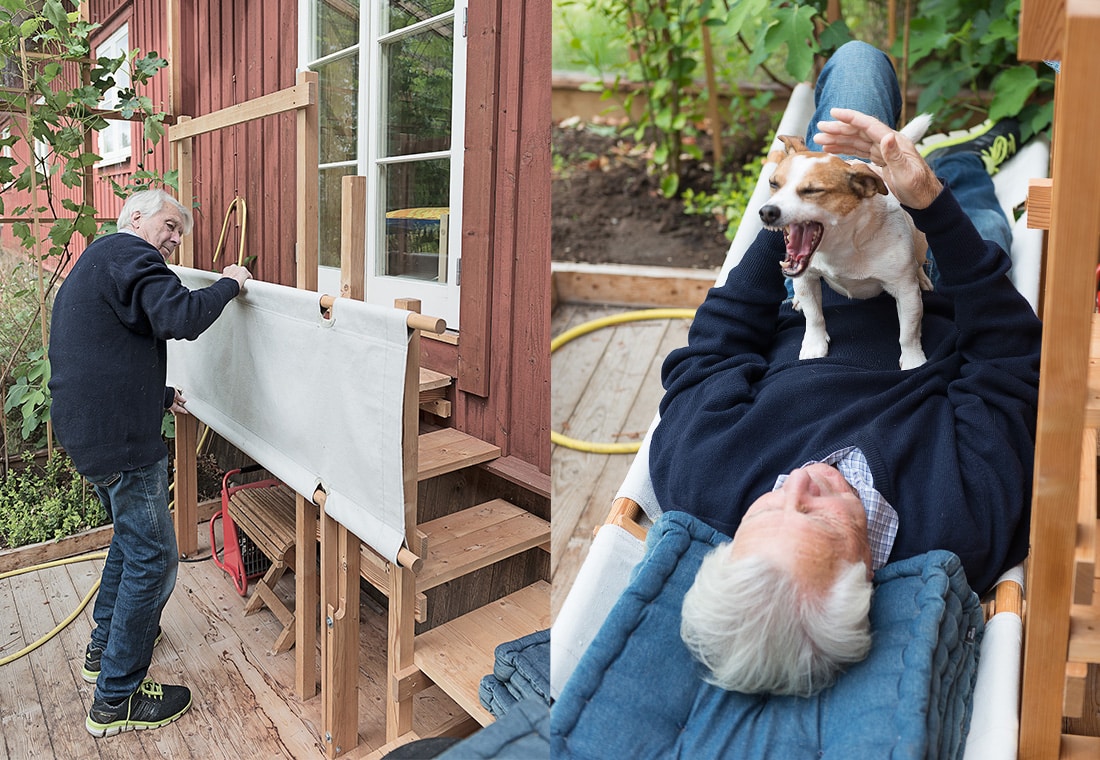
“Of course you want to join in,” says Åke, as Jack the dog jumps up and lies on him.
How did growing up in rural Småländ influence you?
Most of all, I was influenced by being close to the forest, as well as the farmland as it was back then. We lived in harmony with nature in the same way humankind has done for thousands of years. It has given me a sense of security and the feeling that I could always manage. I learned early to lend a hand with everything in a self-subsistent household. My confidence rests in my hands. My creative work has meant everything to me. The forest is both a sanctuary and source of inspiration and I still make sure to give my hands something to work with. That keeps me happy.
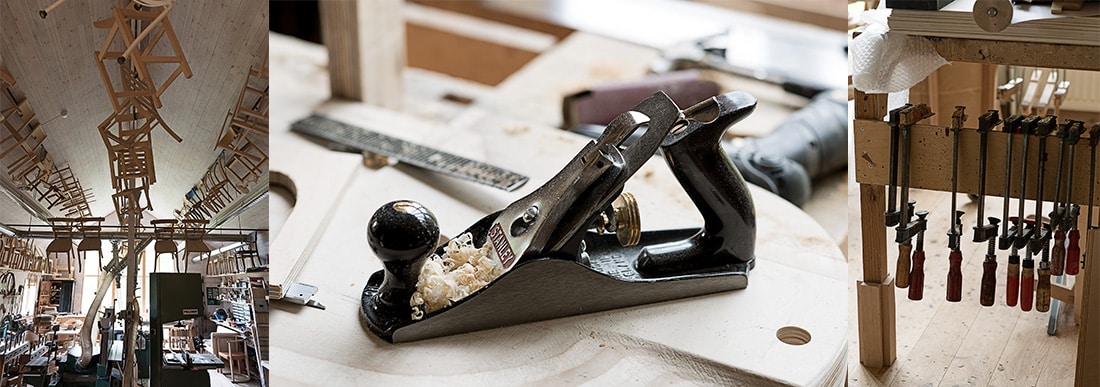
When I was 12, I made a little cabinet in woodwork at school. I received a lot of praise for it and that cabinet paved the way for my following work. The person who was most significant for my development was schoolteacher Karl Håkansson. He himself was artistically inclined and knowledgeable about handicrafts, drawing and painting and he helped me get along. Without the support of my teacher, I don’t know what would have become of me; maybe a farmer in Småland. My parents supported me and my seven siblings as best they could. Two of my siblings emigrated to America and three moved to Stockholm like me.
After four years at Verkstadskola learning cabinet-making in Visby, I started at the University College of Arts, Crafts and Design in 1952.
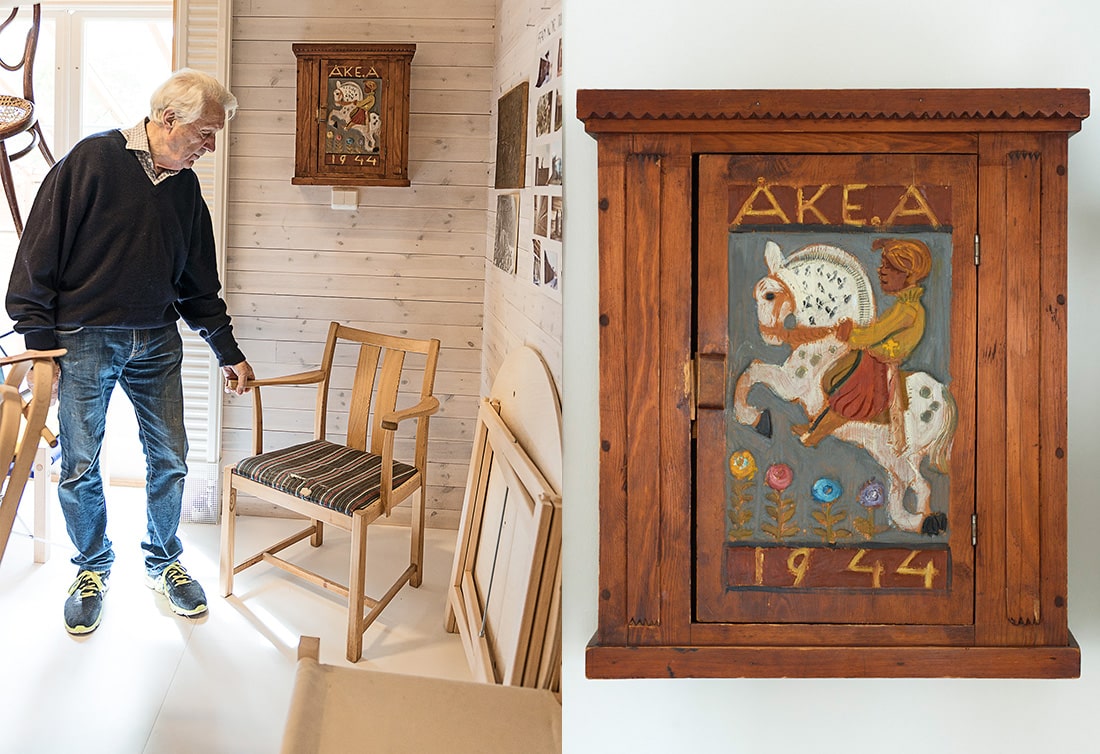
The armchair was the first thing I made at the University College. It was an exercise, clearly inspired by Malmsten.
Do you have any new projects underway?
Often several. An ongoing project is to design seating for the inner courtyard of the Värmland Museum in Karlstad. Architect Cyrillus Johansson began designing the Värmland Museum in 1926 inspired by Chinese temples. The building has two storeys with four wings around an open courtyard. I’m designing a bench for the museum’s inner courtyard and the shape should resemble a daisy. The idea is that 12 petals should be cast in concrete while the middle of the flower creates space for a plantation of natural flowers and trees.
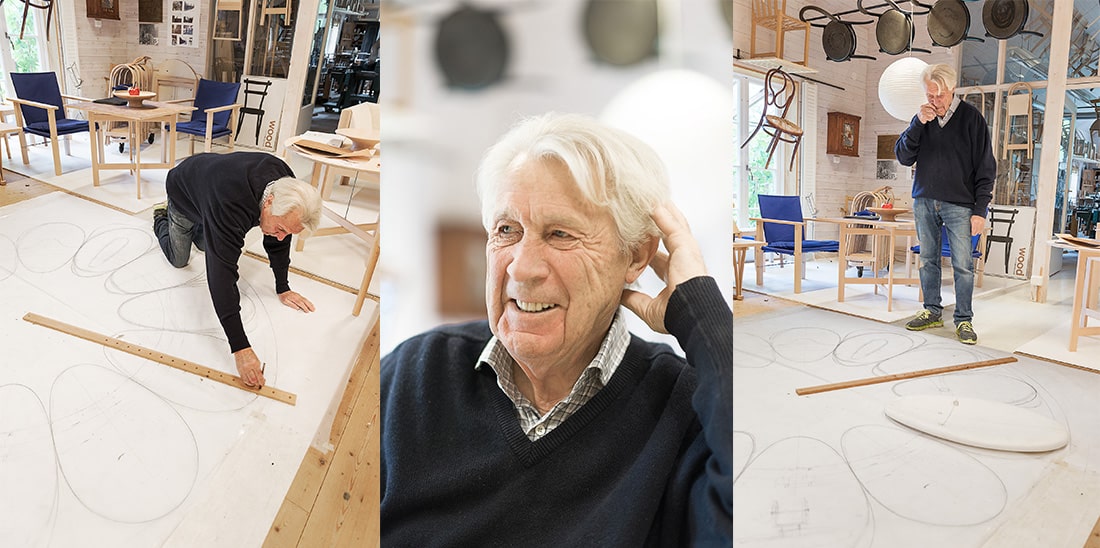
My son-in-law Dag and I, had a meeting with the architect doing the Grünewald Hall at the Stockholm Concert Hall. For me, it’s a typical way of working, that together with the commissioner develop a product for a certain environment. After such a meeting, I’ll go to the workshop and try out some thoughts and ideas. In most cases, this leads to products that enter production at Gärsnäs. This project, over the summer and autumn, has evolved into two prototypes approved by the commissioner. Now 280 armchairs, with a high degree of comfort and flexibility, will be manufactured.
You usually work in close collaboration with the commissioner….
That’s often how the best furniture gets made. I have had assignments for large public environments and it is very rewarding to get close to everyone working there: from the management to the janitor. The full range of staff provides important insights into how furniture works in daily life. For me as a designer, it is important to benefit from their experience, ultimately in order to transfer that knowledge into the product.
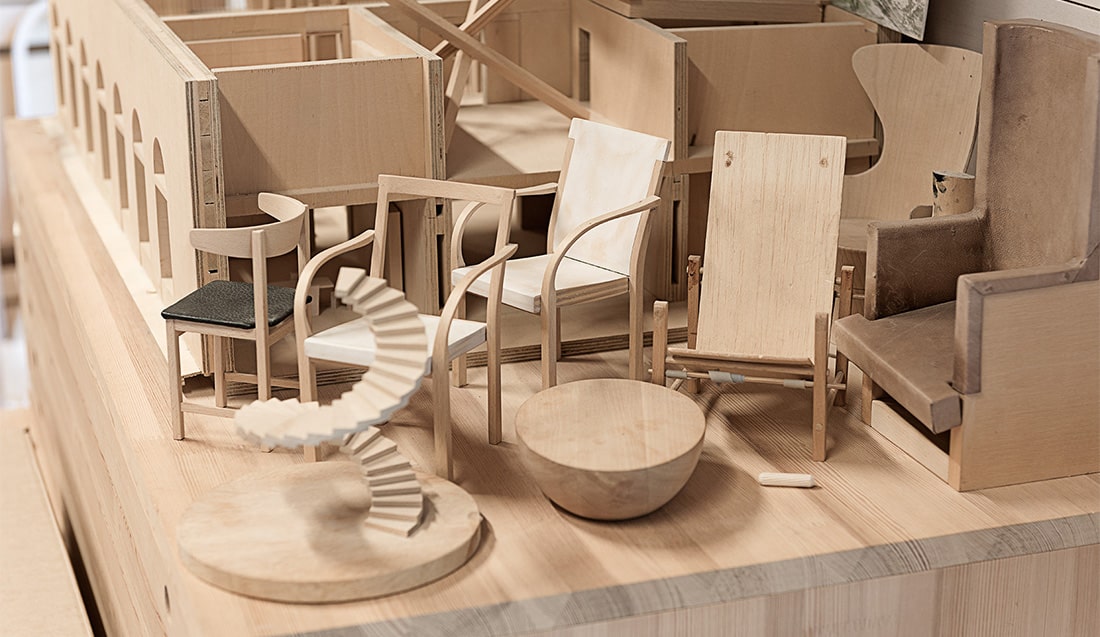
Can you describe your work process?
One example of designing furniture in close collaboration with the commissioner was the Craft chair for Vällingby Church. Peter Celsing designed the church and it was inaugurated in 1960. He also designed the chairs for the original interiors. However, the congregation was never really pleased; they thought the sitting comfort and flexibility were unsatisfactory. A fresh attempt was made in the 1980s to procure new chairs, but even then it wasn’t satisfactory. That resulted in the vicar contacting me and together we assembled a work group. It’s important at an early stage to establish the process with the people in the given environment. A trustful dialogue was established between the church and representatives of the congregation and me.
I developed a proposal based partly on my model Light & Easy, but also inspired by Danish architect Kaare Klint’s chair that he designed in the 1920s-30s for Grundtvig’s Church in Copenhagen. Klint’s chair, in turn, was inspired by older chairs in various cathedrals around Europe. According to my method of working, you never find anything completely new, instead you need to learn from what has been done already. I still think that Kaare Klint’s chair is one of the most beautiful chairs ever designed, however it too is not as comfortable as a user has a right to expect.
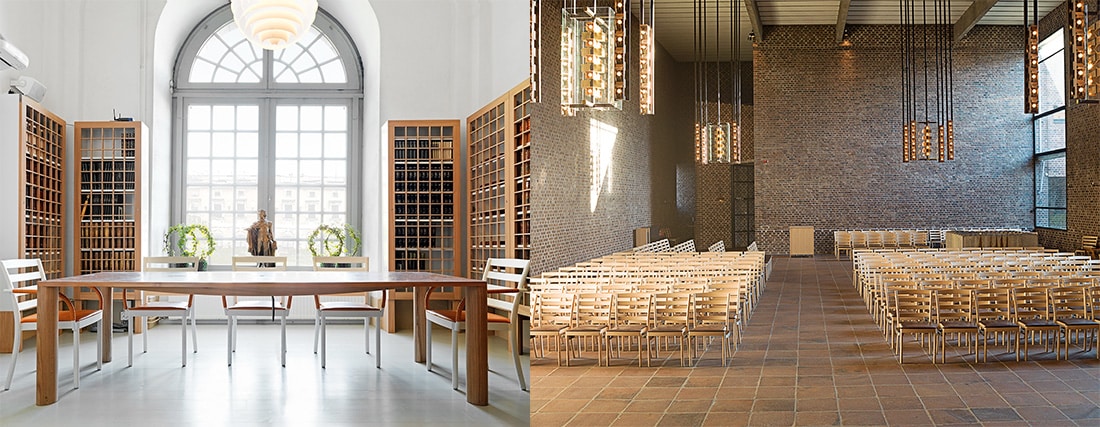
When you look at my Craft chair, then clearly the openwork back is a reference to Kaare Klint’s church chair. The backrest provides a strong visual effect when repeated on a large scale. It is also stackable, in accordance with the congregation’s wishes. I have filled the space created under the frame with padded material, which provides good comfort and a sound-absorbent effect, which is advantageous in a church setting. On the side of the seat is a leather pocket for the hymn book and each chair is also equipped with mountings that enable the chairs to be connected together in two ways: either in a straight row or a curved radius. Furthermore, one side of the back has a hook to hang handbags on; it looks like it has grown there naturally like a branch and it has proven to work extremely well.
After more than a year of exemplary collaboration with the vicar and the congregation, the new chair was inaugurated in the presence of the archbishop and a large assembly. Since then, the chair has come to be used in a number of prestigious environments. This is a prime example of a well-functioning work process.
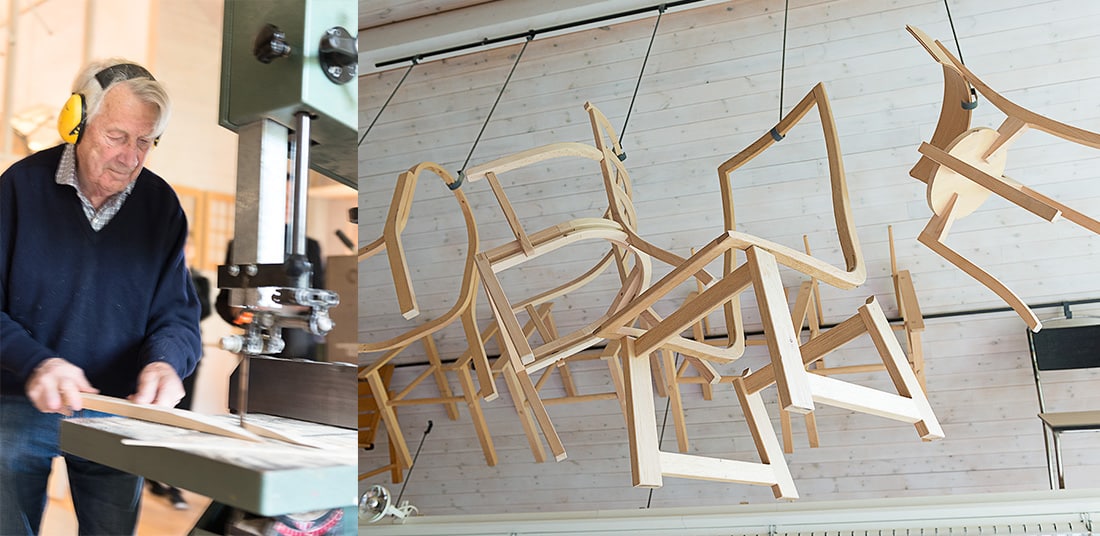
Sustainability is a word that is very current in our time; what does it mean to you?
Sustainability is a part of the environment I grew up in. It’s something I return to all the time. In Sweden in the 1930s, there was no social safety net, instead every action was about survival. Those of us who grew up in the countryside needed everything to be functional because it was a matter of survival. Objects needed to last generations and were handed down to the next one. That’s the basic idea I have unconsciously applied to everything I do.
Function has always been an important part of my creative work. Which is why I was so shocked when postmodernism became popular in the 1980s. I still cannot understand how the expression can be more important than the functional value. Good functionality and sustainability go together and have always been a feature of my work.
Which of your chairs are you most satisfied with?
If I have to choose one of my chairs, then it is Light & Easy. The model was designed without any specific environment in mind to facilitate manufacture in large series. Light & Easy is strong, offers good seating comfort, is durable in tough environments and in addition is very resource efficient. Lightness is an important and often overlooked quality. My motto is do not use more material than necessary. Furthermore, Light & Easy is a design that suits a wide range of environments, for example in healthcare, but also assembly halls and restaurants of all kinds. The chair has a design that suits both older and modern settings, as well as simpler or more exclusive environments. One example is the Linnaeus Garden in Uppsala that complemented its suite of furniture with Light & Easy in a light-grey stain. At the Royal Armoury, there is a Light & Easy leather-bound armrest version.
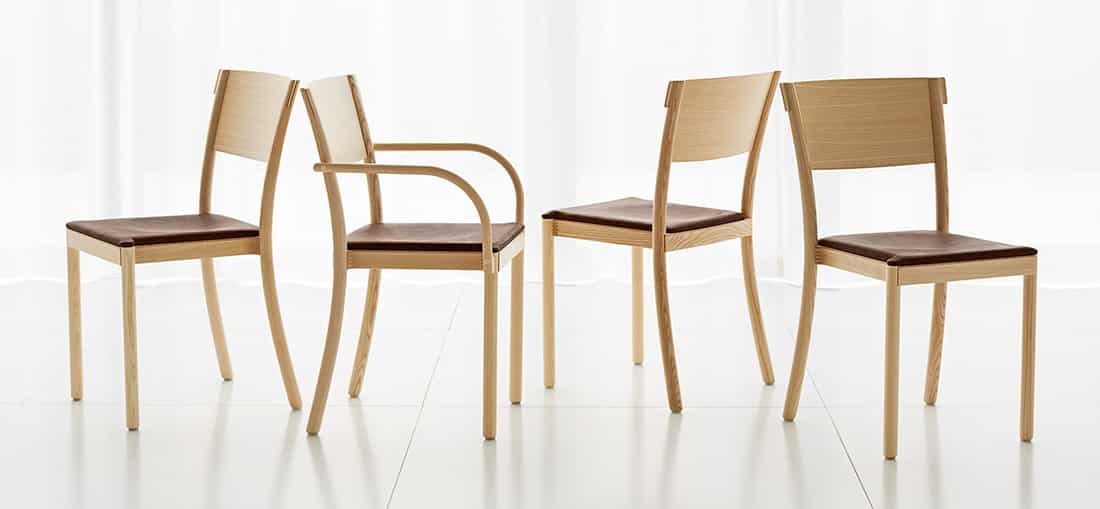
About lightness…
It’s important to make furniture as light as possible by using the smallest amount of material within what is technically feasible. Public spaces have a great necessity to vary their interiors. It’s essential that a room can quickly be emptied; chairs stacked ten together. It cannot be any heavier than absolutely necessary and it must be time effective.
What do you say to today’s young designers?
I have a great deal of contact with various schools and try to teach students not to chase after the new. This is because new things come when the time is right and genuine innovations occur only a few times each century. You need to learn from previous generations and accept that the wheel has already been invented. Instead, try reworking and adapting things to meet new requirements. The concept of sustainable design means that a product has a long technical and aesthetical life. That’s what I try to convey to the young people I meet.
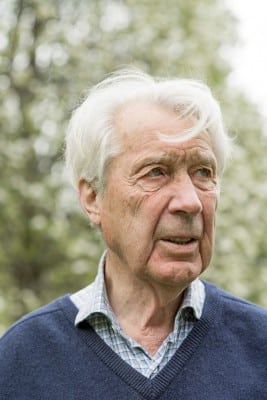
Box 26 Se-272 03 Gärsnäs
Malmövägen 16 − 18
PHONE +46 414 530 00
FAX +46 414 506 16
info@garsnas.se
Office and Showroom:
Eastmansvägen 12A, SE-113 61 Stockholm
phone +46 8 442 91 50 info@garsnas.se
,


